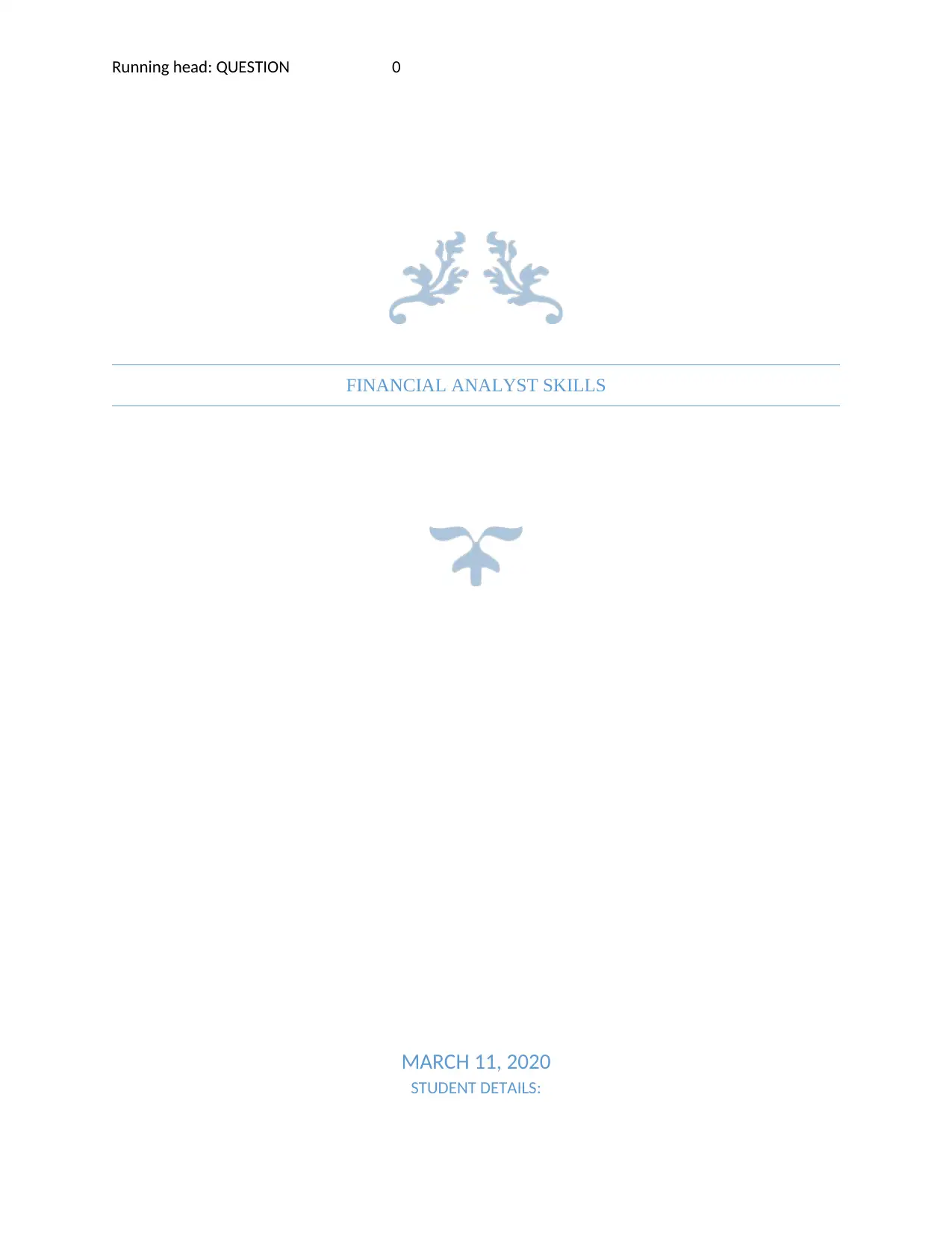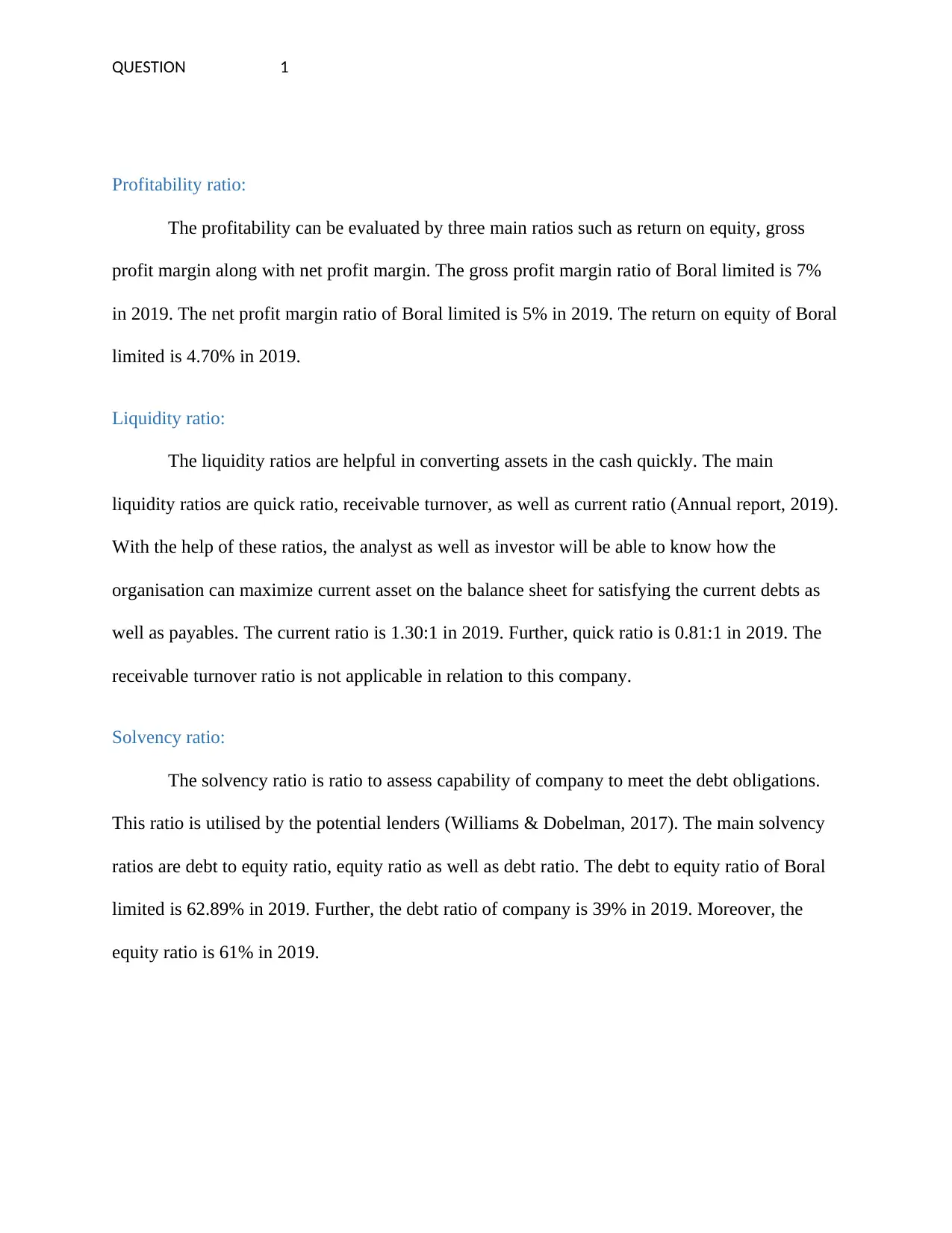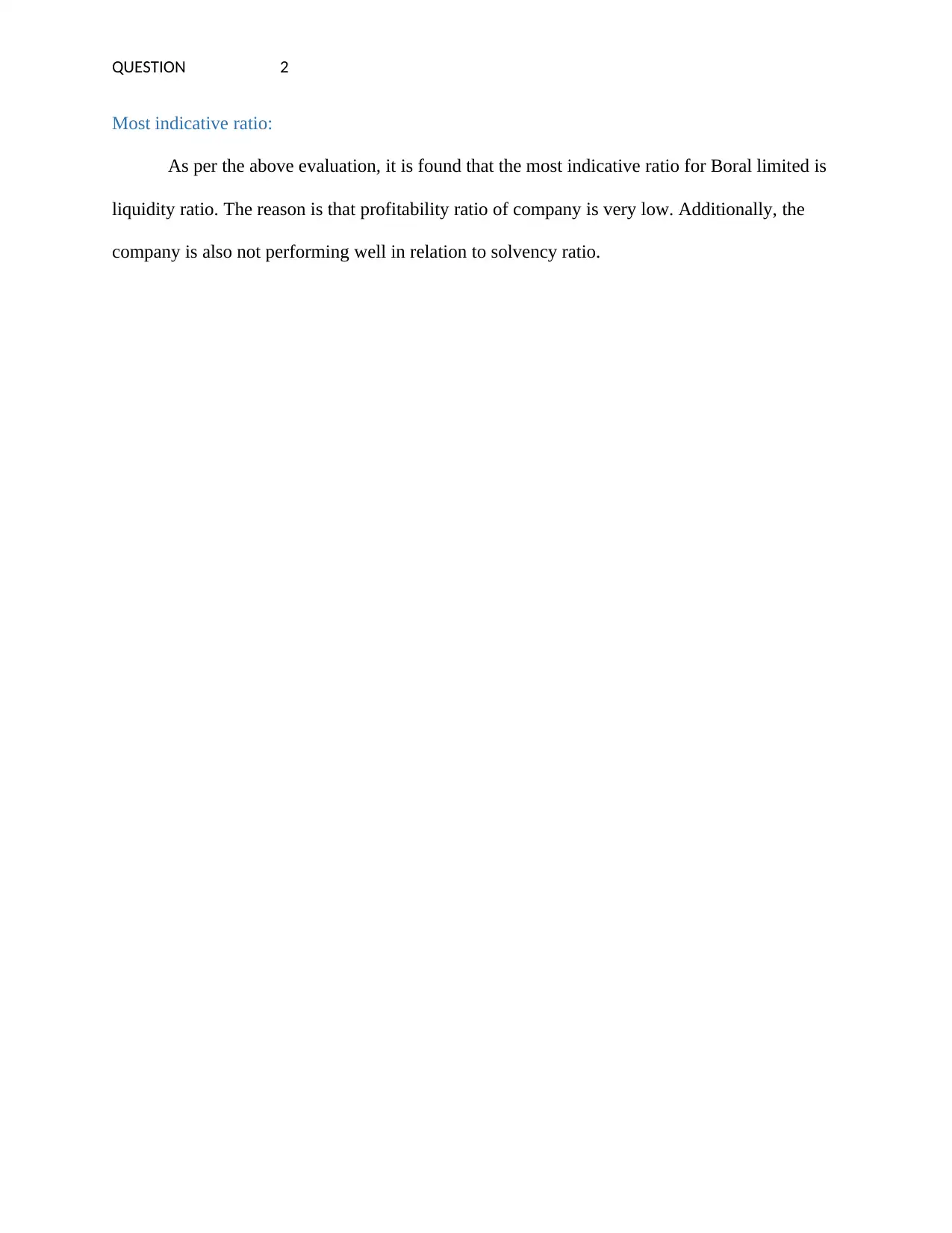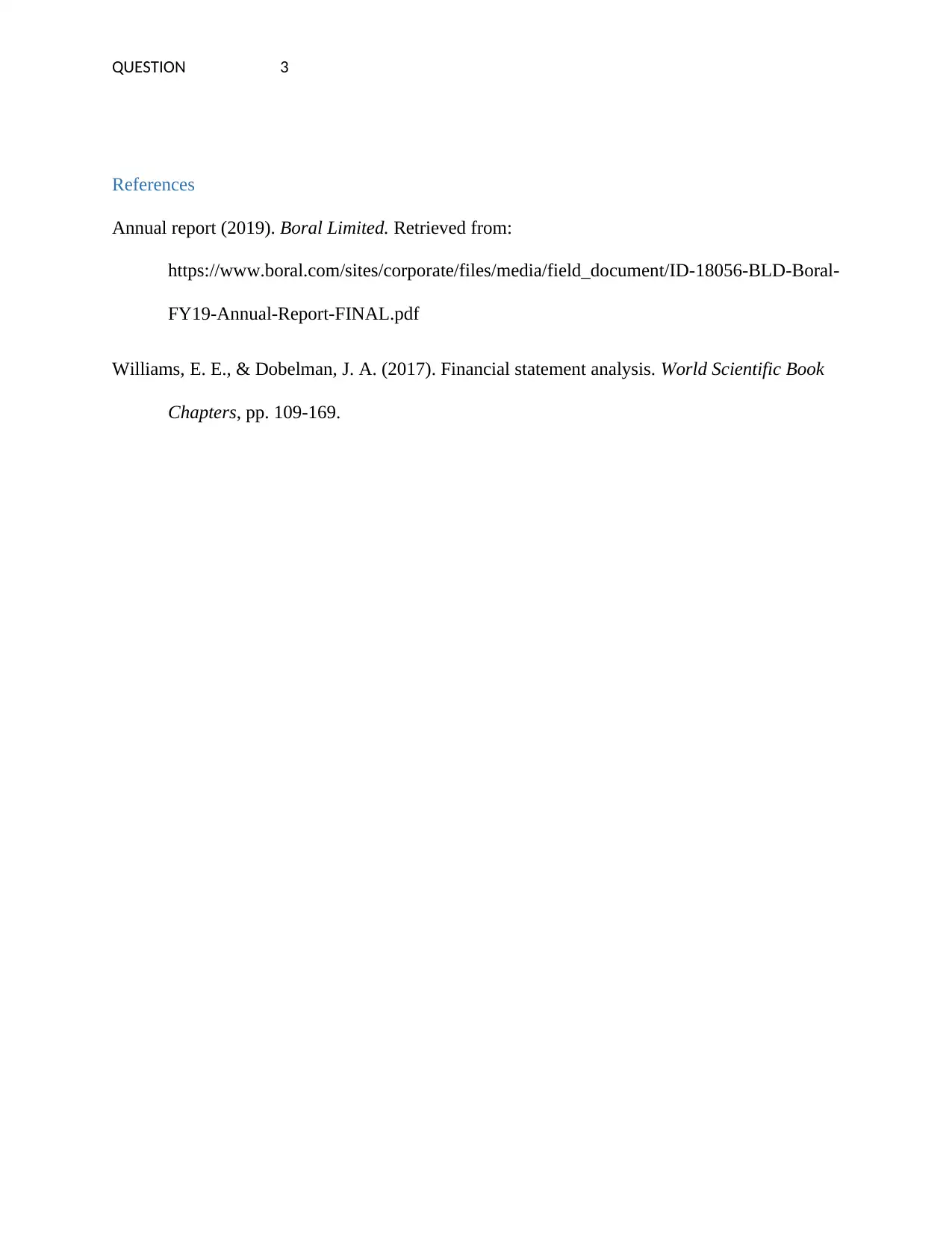Comprehensive Financial Analysis Report for Boral Limited (2019)
VerifiedAdded on 2022/08/19
|4
|393
|15
Report
AI Summary
This report presents a financial analysis of Boral Limited, focusing on the year 2019. The analysis examines profitability, liquidity, and solvency ratios to assess the company's financial health. Profitability is evaluated through gross profit margin, net profit margin, and return on equity. Liquidity is assessed using the current ratio and quick ratio, while solvency is examined through the debt-to-equity ratio, debt ratio, and equity ratio. The report concludes that the liquidity ratio is the most indicative for Boral Limited, due to the low profitability and concerning solvency ratios. The report references Boral Limited's 2019 Annual Report and a relevant academic text on financial statement analysis.
1 out of 4










![[object Object]](/_next/static/media/star-bottom.7253800d.svg)